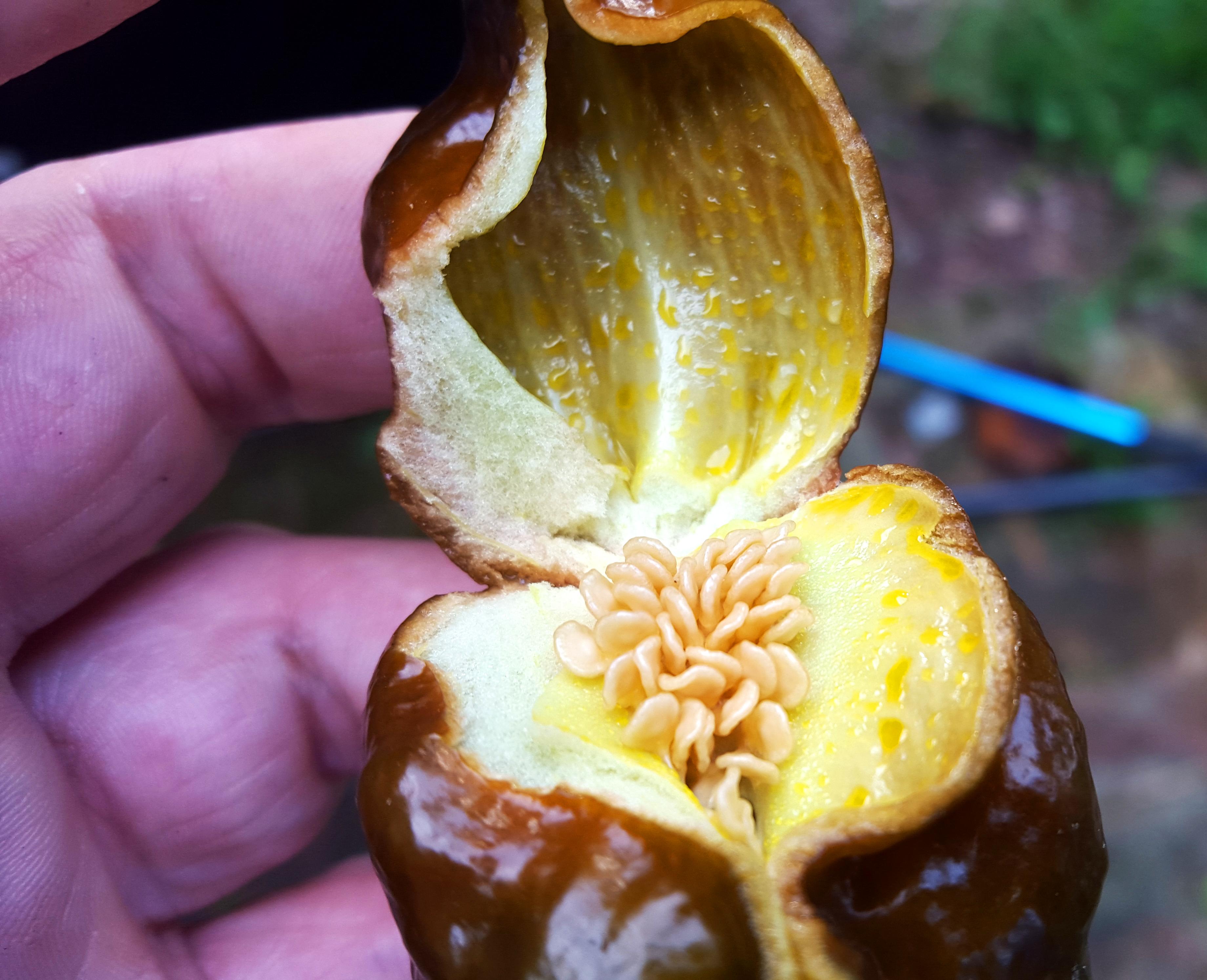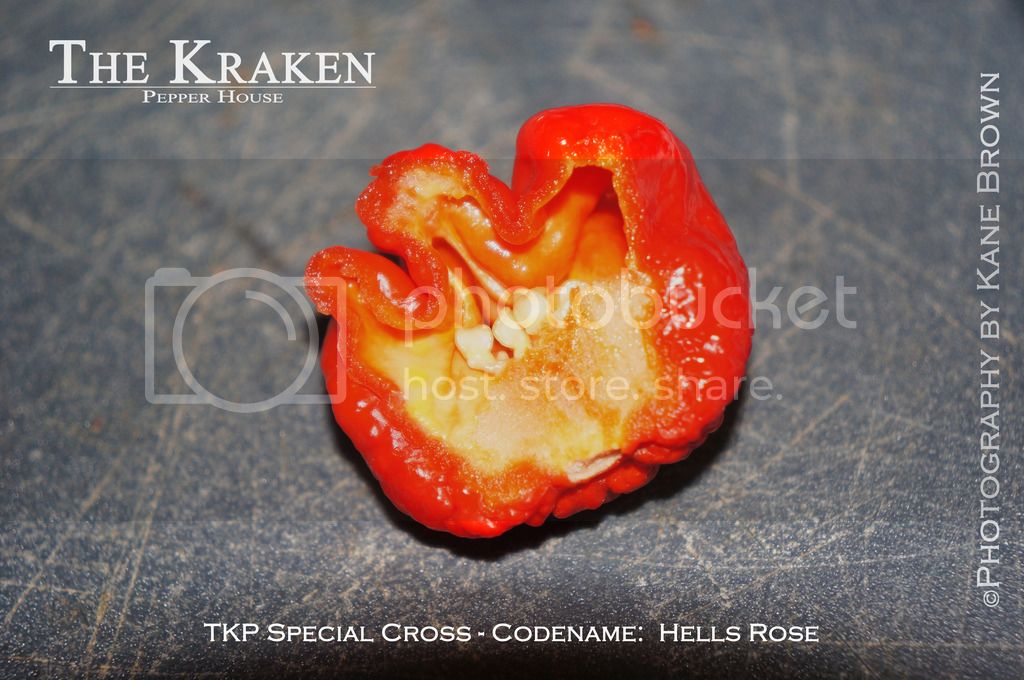I thought you all might find this article interesting: http://newscenter.nmsu.edu/Articles/view/11668/nmsu-researchers-investigate-how-super-hot-peppers-pack-their-powerful-punch
TL;DR version: In most chile plants, the capsaicinoid vesicles are only located on the placenta, but in superhots they are concentrated on the interior wall of the pod as well. Bosland suggests that this info may help breeders develop peppers twice as hot as the current hottest.
TL;DR version: In most chile plants, the capsaicinoid vesicles are only located on the placenta, but in superhots they are concentrated on the interior wall of the pod as well. Bosland suggests that this info may help breeders develop peppers twice as hot as the current hottest.



